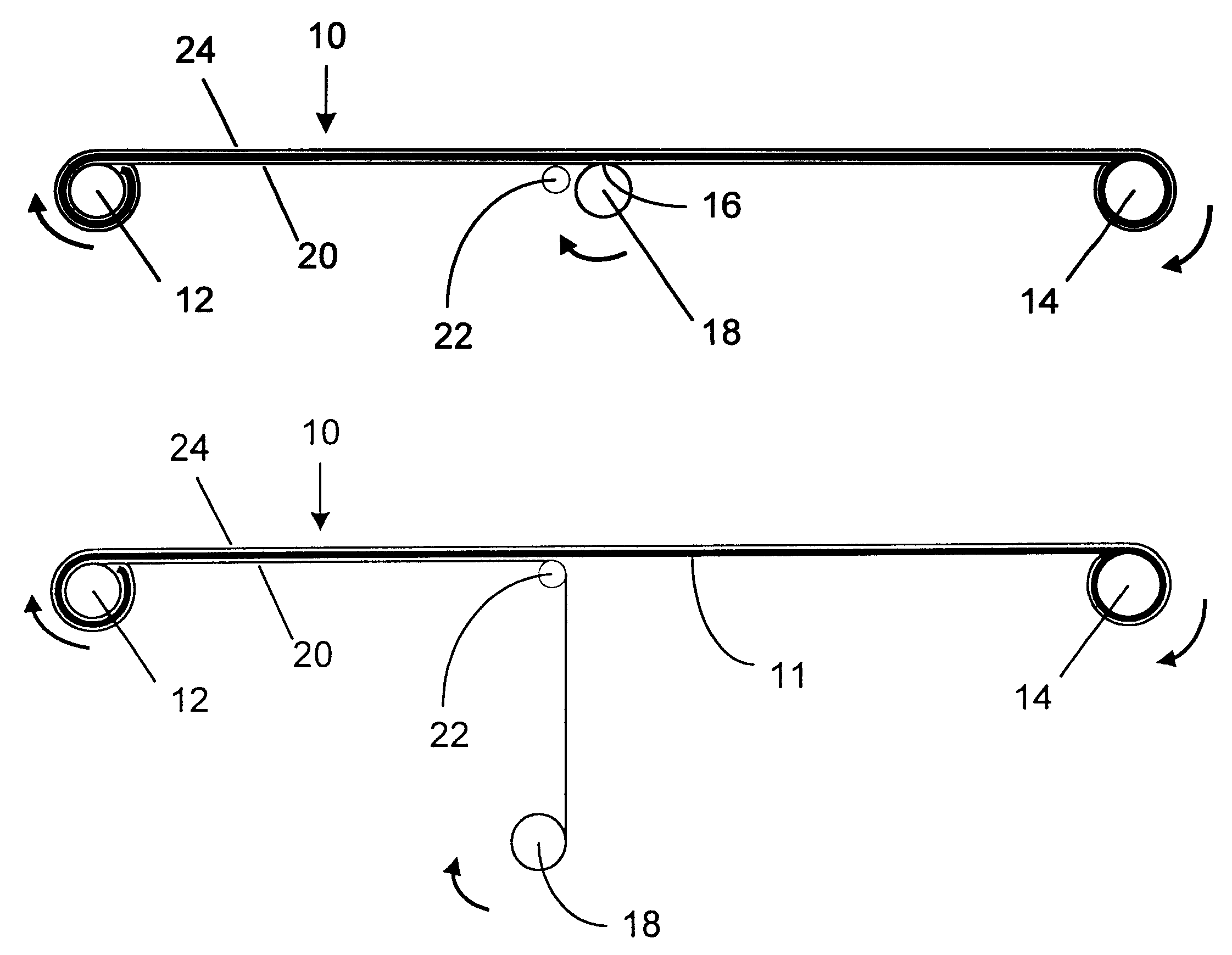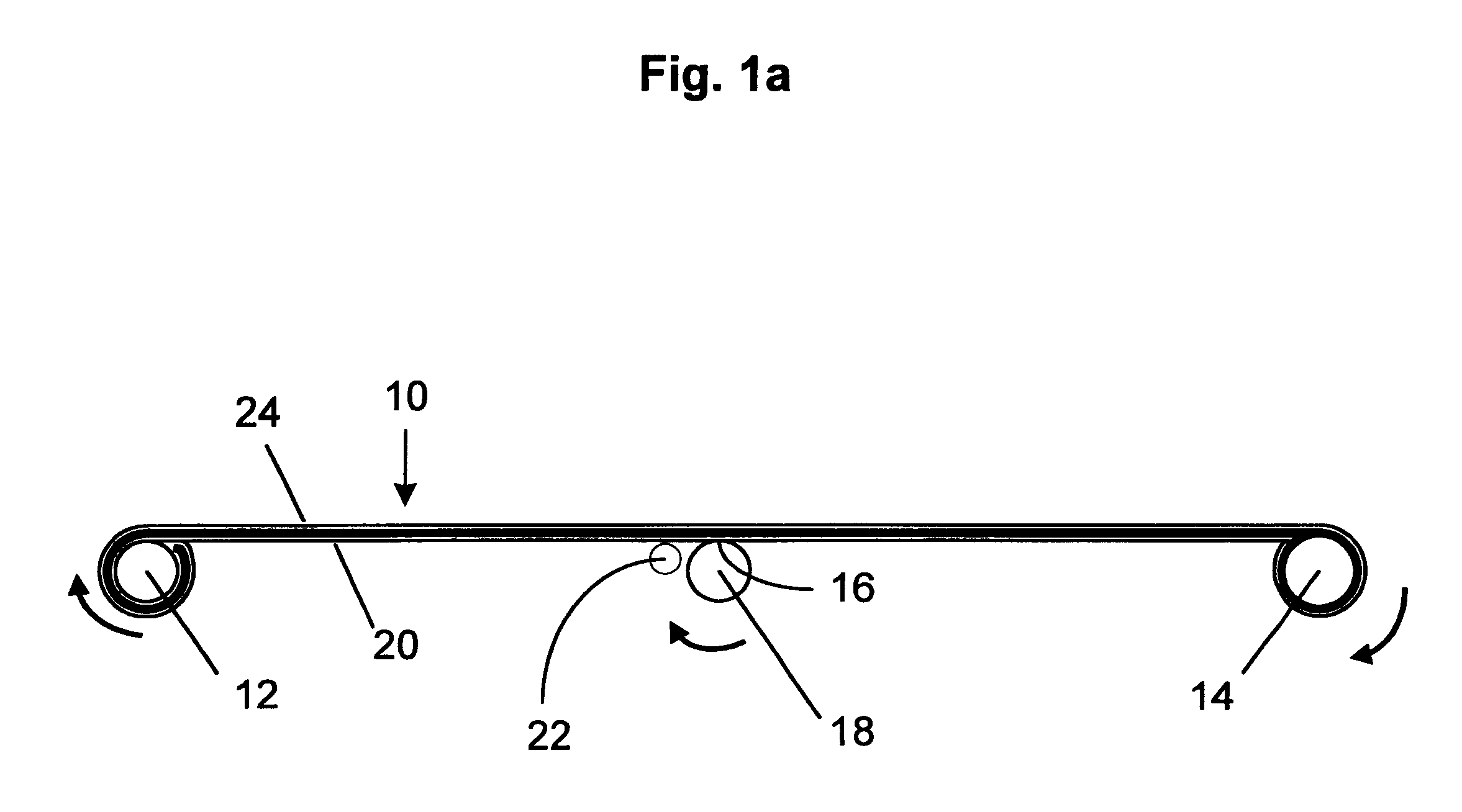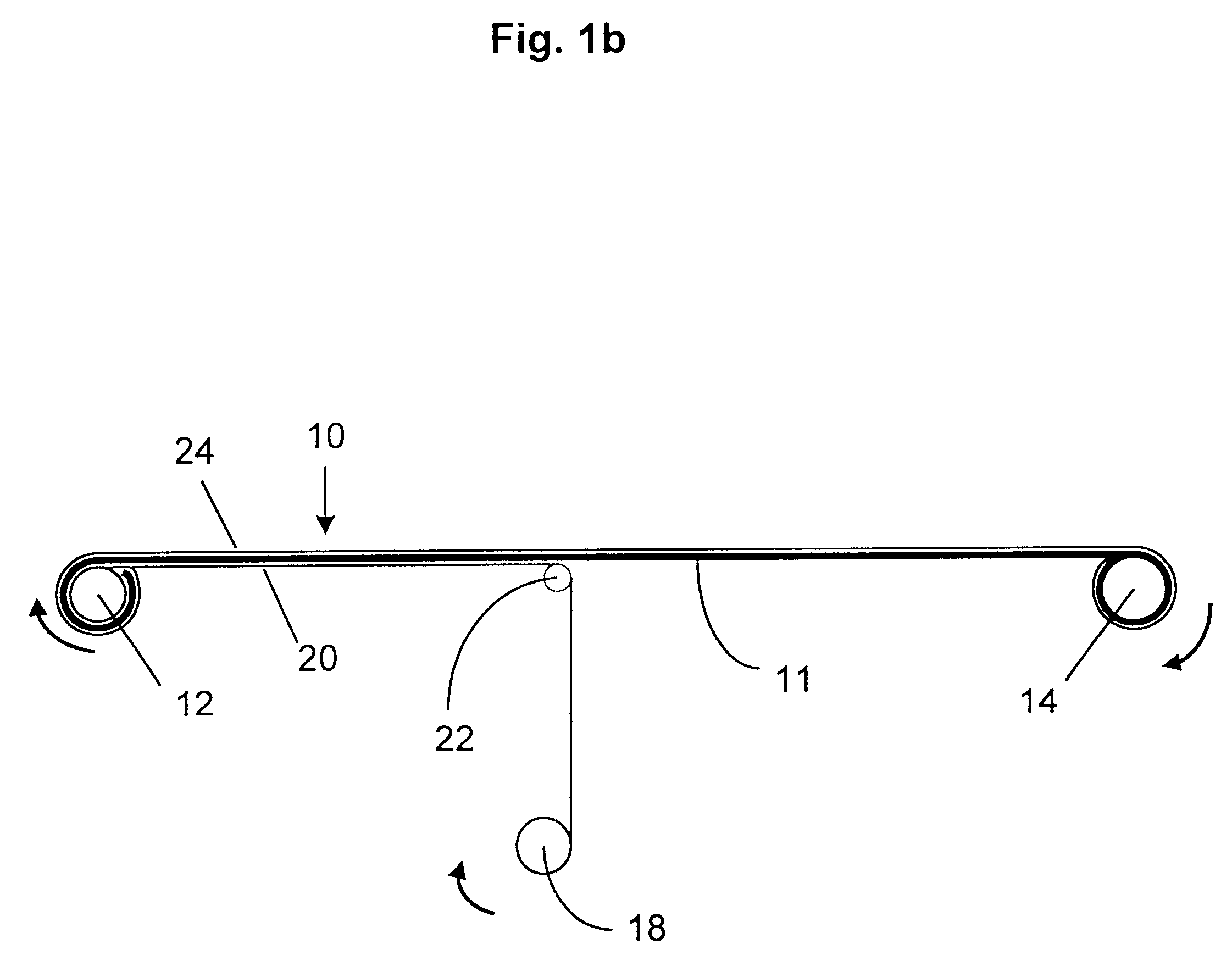Method of making stripped porous polymer films
a technology of porous polymer films and porous polymer films, which is applied in the direction of filtration separation, stationary filtering elements, fuel cells, etc., can solve the problems of affecting the subsequent performance of the film of surfactants in the final product, the surface characteristics of the film may not be easily penetrated by the film, and the disadvantage of the difference in surface characteristics compared to the characteristics of the interior bulk material of some such porous films. to achieve the effect of constant geometry of shearing
- Summary
- Abstract
- Description
- Claims
- Application Information
AI Technical Summary
Benefits of technology
Problems solved by technology
Method used
Image
Examples
example 2
Preparation of Stripped Microporous Polymer Film From Graft-Polymerized Ultra-High Molecular Weight
Polyethylene Microporous Film (Pall GPT10201)
A 152 cm.times.76 cm sample of GPT10201 (trade designation of Pall Corporation) was stripped according to the method described in Example 1. GPT10201 is a microporous UHMWPE material that has been graft polymerized with a polymer to render the material more hydrophilic.
Several tests were then performed comparing the material properties of the starting films and the stripped films of Example 1 and Example 2. The tests showed that the stripped films were substantially homogeneous relative to their respective heterogeneous starting films, having more open pores, reduced surface density, and increased surface roughness. The stripped films also demonstrated increased permeability and penetrability characteristics relative to the starting film.
SEM photomicrographs were taken of the starting film and the stripped film of Example 1. FIGS. 3 and 4 ar...
example 3
Incorporation of Stripped and Unstripped Microporous Polymer Films
Composite Ion Exchange Membranes
In Composite ion exchange membranes were prepared from samples of the starting film and the stripped microporous film prepared by the method described in Example 1 by impregnating each of the samples with the BAM.RTM. 9907147 ionomer solution, as described in U.S. Pat. 5,834,523, and removing the solvent by evaporation at 65.degree. C.
example 4
Use of Composite Ion exchange Membranes In a Fuel Cell
Each of the composite membranes prepared as described in Example 3 were bonded to two platinum-catalyzed carbon fiber paper electrodes at 140.degree. C. under 6700 kPa pressure to form membrane electrode assemblies having a total platinum catalyst loading of 1 mg / cm.sup.2. The resulting membrane assemblies were tested in identical Ballard Mark IV single cell fuel cells operated under substantially identical conditions, namely, 80.degree. C. temperature, 3.02 bar for oxidant and fuel, and 2.0 and 1.5 stoichiometry, respectively, for oxidant and fuel. The voltage at 1 A / cm.sup.2 was measured and the results compared. As indicated in Table 3, the fuel cell containing the composite membrane prepared from the stripped microporous polymer film according to the method described in Example 1 demonstrated significantly higher voltage as compared to the fuel cell containing the composite membrane prepared from the starting film.
In addition...
PUM
| Property | Measurement | Unit |
|---|---|---|
| Angle | aaaaa | aaaaa |
| Volume | aaaaa | aaaaa |
| Volume | aaaaa | aaaaa |
Abstract
Description
Claims
Application Information
 Login to View More
Login to View More - R&D
- Intellectual Property
- Life Sciences
- Materials
- Tech Scout
- Unparalleled Data Quality
- Higher Quality Content
- 60% Fewer Hallucinations
Browse by: Latest US Patents, China's latest patents, Technical Efficacy Thesaurus, Application Domain, Technology Topic, Popular Technical Reports.
© 2025 PatSnap. All rights reserved.Legal|Privacy policy|Modern Slavery Act Transparency Statement|Sitemap|About US| Contact US: help@patsnap.com



